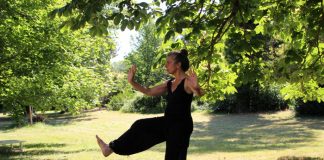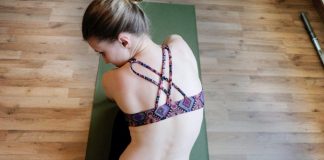According to Cleveland Clinic, Plantar fasciitis is inflammation in the plantar fascia in your foot. It’s the most common cause of heel pain. The plantar fascia is a strong, fibrous attachment (similar to a ligament) that runs from your heel to the ball of your foot and your toes. It’s stretchy like a thick rubber band. The plantar fascia connects the bones in your foot together and forms the arch on the bottom of your foot. Plantar fasciitis happens when your plantar fascia is overused or stretched too far. Anything that damages your plantar fascia can make it swell. This inflammation makes it painful to walk or use your foot, especially after prolonged inactivity. Most people experience plantar fasciitis in one foot at a time, but it’s possible for it to affect both your feet at once.
For individuals dealing with severe or chronic fasciitis, prioritizing a visit to a healthcare professional—whether a doctor or a physiotherapist—is crucial. Additionally, consider incorporating the following measures into your routine to alleviate symptoms:
- Yoga Stretching: Regular yoga stretches can provide relief by improving flexibility and reducing tension in the fascia.
- Icing: Applying ice to the affected area can help reduce inflammation and soothe discomfort.
- Night Splint: Wearing a night splint can maintain proper foot alignment during sleep, aiding in the healing process.
With a few simple asanas or postures, it is possible to get relief from this condition. This video below provides a series of asanas which provide permanent relief from the excruciating pain caused by plantar fasciitis.
Step 1 Bhaddha Konasana (Butterfly pose): Begin in an upright seated position, gently bend your knees and press the soles of the feet together. Bring the feet as close to the pelvic bones as possible without causing tension in the body. To increase comfort, you can sit on the edge of a cushion. Wrap your palms around the feet and make fluttering movements with your legs.
Step 2: Extend one leg and keep the other leg (affected with plantar fasciitis) folded and on top of the stretched leg. With the help of your palm stretch the foot up and down. The fingers of your hands should interlock with your toes during this stretch. Increase movement to ankle rotation.
Step 3: Now swap the positions of your legs such that the affected leg is now stretched out and the folded leg touches the inner thigh of the stretched leg. Place a Yoga strap at the balls of the foot of the stretched leg and pull the toes towards you to feel resistance and then away from you, thus, releasing the tension. Alternate this stretch with both the legs.
Step 4 Bharmanasana (table top pose): From the sitting position, come on all fours such that the torso is parallel to the floor and palms are wide open. Ensure the distance between the knees and the palms is the same such that the palms are shoulders-width apart and legs are hip-width apart. Now extend one leg and stretch out the opposite hand while breathing in. Exhale and bring the elbow to the knee close to the core. Repeat with the other side.
Step 5 Marjaryasana (Cat pose): In the same table-top position tuck your toes, inhale and raise your chin and tilt your head back, push your navel downwards and raise your tailbone. As you exhale, drop your chin to your chest and arch your back up as much as you can; relax the pelvic muscles.
Step 6: Come back to the table-top position, stretch one leg behind and tuck the foot on the floor so that you feel a little stretch in the foot. Raise the leg and bring it behind the other leg and again tuck the toe into the floor. Feel the stretch in the ball of the foot. Repeat with the other leg.
Follow the video for the entire sequence. Remember, patience and moderation are key. Overexertion may worsen the condition, so listen to your body and proceed with wisdom.
47 Most Famous Motivational Quotes of All-Time
49 Greatest Love Quotes
37 Inspirational Quotes that Will Change Your Life
































